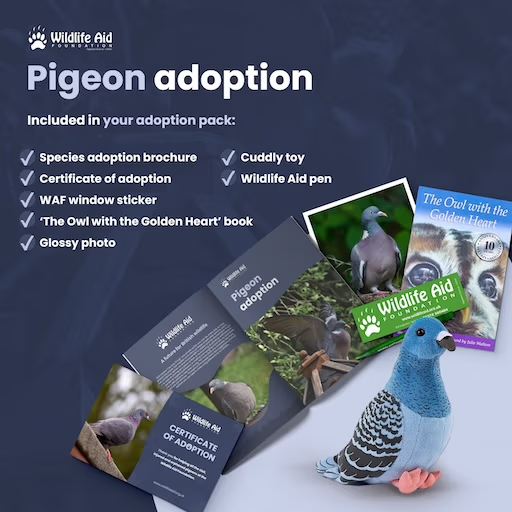Pigeons
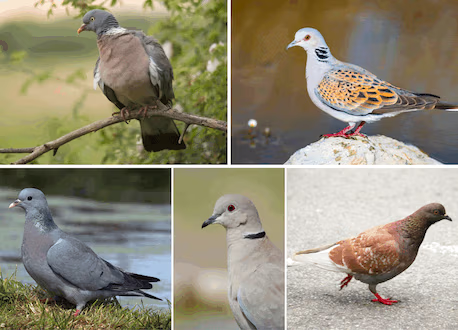
Pigeon facts
Pigeon’s are one of the most prevalent bird species, globally. With 352 species, within the Columbidae family, the mighty pigeon cannot be ignored for their adaptability and resilience.
In the UK, we have 5 species that fall within the pigeon category; Stock, Dove, Rock Dove aka Feral Pigeon, Turtle Dove, Wood Pigeon and the Collared Dove.
Scientific Names:
Wood Pigeon: Columba palumbus
Turtle Dove: Streptopelia turtur
Stock Dove: Columba oenas
Collared Dove: Streptopelia decaocto
Rock Dove/Feral Pigeon: Columba livia domestica
Rock Dove
The Rock Dove is the wild ancestor of domestic Pigeons the world over, which were originally domesticated to provide food. Feral Pigeons come in all shades, some bluer, others blacker – some are pale grey with darker checked markings, others an unusual shade of dull brick-red or cinnamon-brown.
Length: 32-37cm
Wingspan: 64-72
Weight: averages between 100-450g
Diet: Seeds, fruits, nuts, grains, cereal crops, peas, berries and vegetables
Breeding season: All year round
When to see them: All year round
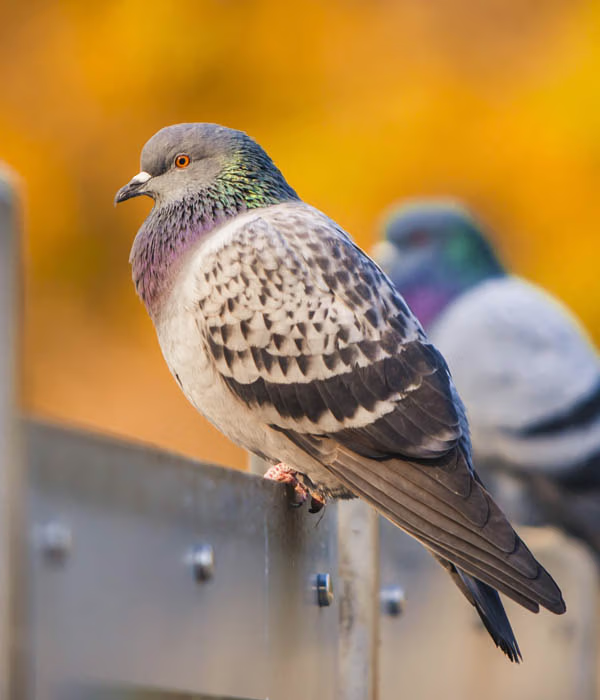
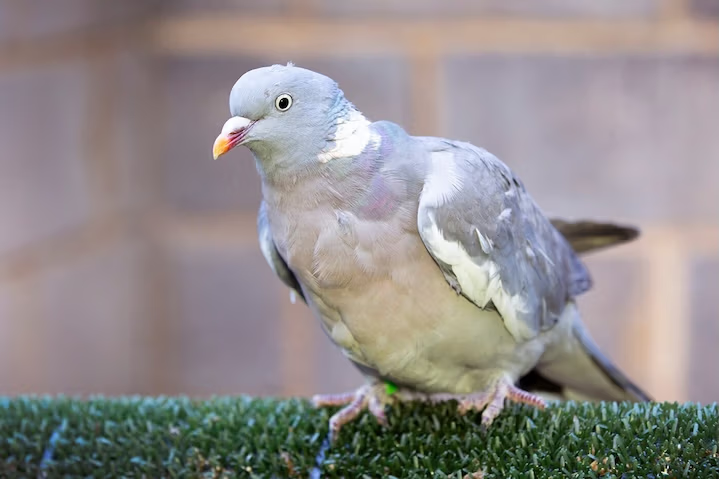
Wood Pigeon
The wood pigeon is the most common pigeon found in the UK, with numbers of birds even eclipsing the feral pigeon found in towns and cities all over the UK. Unlike the feral pigeon, however, the wood pigeon is found predominantly in rural areas, but in the last 30 years the bird has started to exploit urban habitats as a result of increasing persecution in its natural habitat.
Length: 38-43 cm
Wingspan: 68-80cm
Weight: 480-550 grams
Diet: Seeds, fruits, nuts, grains, cereal crops, peas, berries and vegetables
Breeding season: June to November
When to see them: All year round
Collared Dove
The second smallest of the five pigeon species, the collared dove is not native to the UK, having been introduced in 1953 from Europe. Like the wood pigeon and feral pigeon, the collared dove is an extremely successful species and although originally only found in warmer regions such as southern Europe, the bird has now spread as far as Scandinavia, north of the Arctic Circle.
Length: 31-33 cm
Wingspan: 47-55cm
Weight: 150-220g
Diet: Seeds, fruits, nuts, grains, cereal crops, peas, berries and vegetables
Breeding season: Between February/March and October
When to see them: All year round
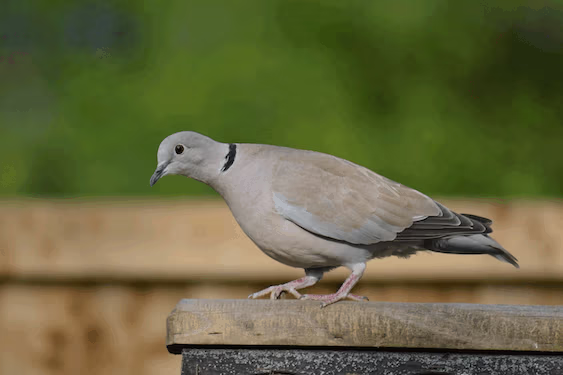
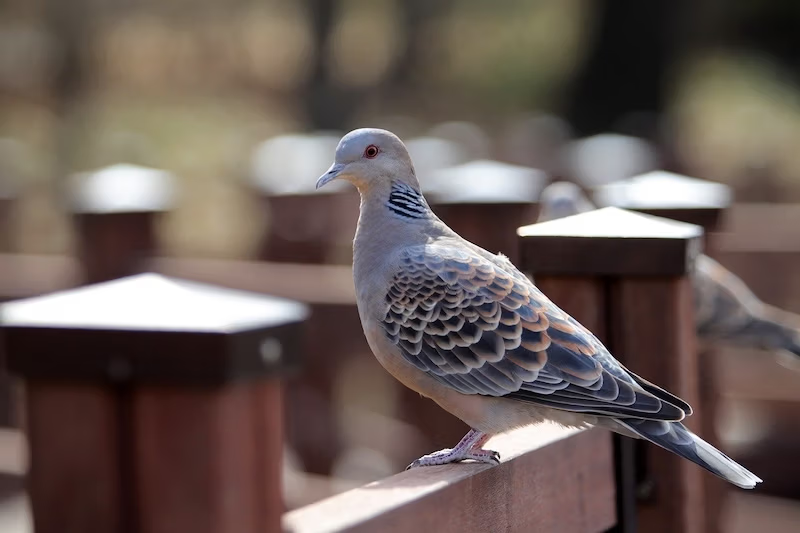
Turtle Dove
The turtle dove is the rarest member of the columbidae family in the UK and is a migratory bird, arriving in the UK in late April or May and leaving any time between July and September.
Modern farming methods have impacted on the breeding success of the turtle dove, with a significant reduction in the number of nesting sites as a result of the removal of natural hedgerows, unkept areas of scrub and hawthorns.
The wholesale illegal slaughter of migratory birds in southern Europe has also had a devastating impact on numbers, seeing them plummet by an estimated 99% since their peak in the late 1960s.
Length: 26-28 cm
Wingspan: 47–53 cm
Weight: 130-180g
Diet: Seeds, fruits, nuts, grains, cereal crops, peas, berries and vegetables
Breeding season: May to August
When to see them: April to September
Stock Dove
The stock dove is a bird similar in both size and appearance to the rock dove and feral pigeon. These similarities make it difficult to identify and most stock doves are misidentified as being rock doves/feral pigeons
The stock dove is a shy and solitary bird and normally found in rural areas, mainly farmland, moorland and open parkland areas with large deciduous trees. The bird is rarely found in urban areas. Although the stock dove inhabits the same areas as the wood pigeon, it is rarely found in large flocks, with birds more likely to be seen in pairs rather than in numbers
Length: 32-34 cm
Wingspan: 47–53 cm
Weight: 290-330g
Diet: Seeds, fruits, nuts, grains, cereal crops, peas, berries and vegetables
Breeding season: March to September/October
When to see them: All year round
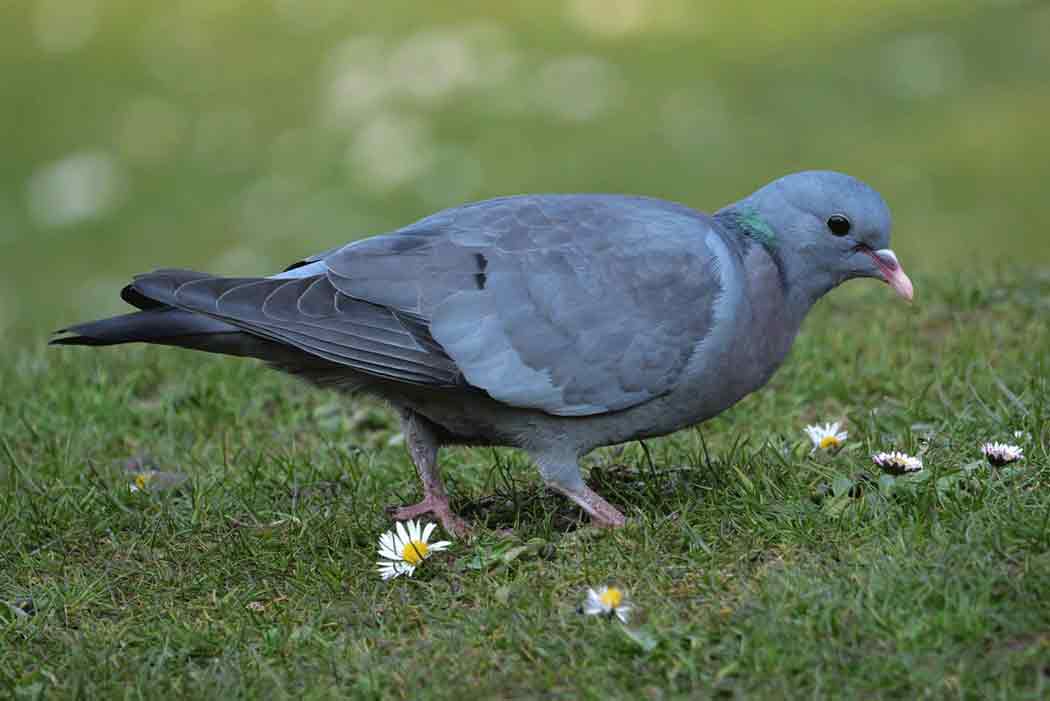
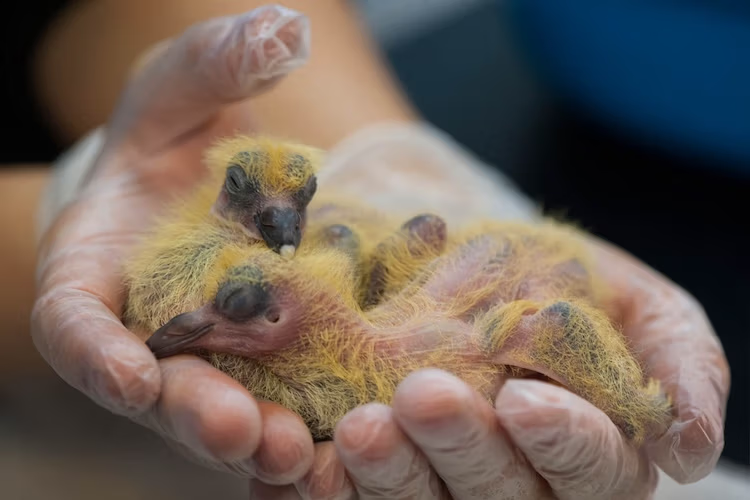
Behaviour
Whilst some species of pigeon are incredibly social, and the majority mated for life, the rock doves and wood pigeons are often in large flocks varying between 50 – 500 individuals!
Stock doves, collared doves & turtle doves usually occur in their mated pair, or small family unit, and tend to be much more shy, as a result of their predominantly rural living.
The rock dove was domesticated into what we now call the feral pigeon. They are probably best known for their ability to return ‘home’ from long distances and has therefore been used extensively throughout history as a messenger, dating as far back as 2500 BC and continuing into the 21st century.
Notorious for building structurally unstable nests, the young of pigeons, commonly known as squabs, are one of our most common admissions, as a result of failing nests.
Threats
Of the five species of pigeon in the UK, only the turtle dove is classed as vulnerable, as it continues to decrease in populations. Several conservation organisations, specifically the RSPB, have management programmes in place to help provide habitat and resources for the species.
With several of the other species continuing to increase in population, this does make them suspetical to animal cruelty, specifically of the feral pigeons, commonly found in our town and cities.
We are saddened to report that pigeons are the most common species we admit here at WAF, as a result of animal cruelty.
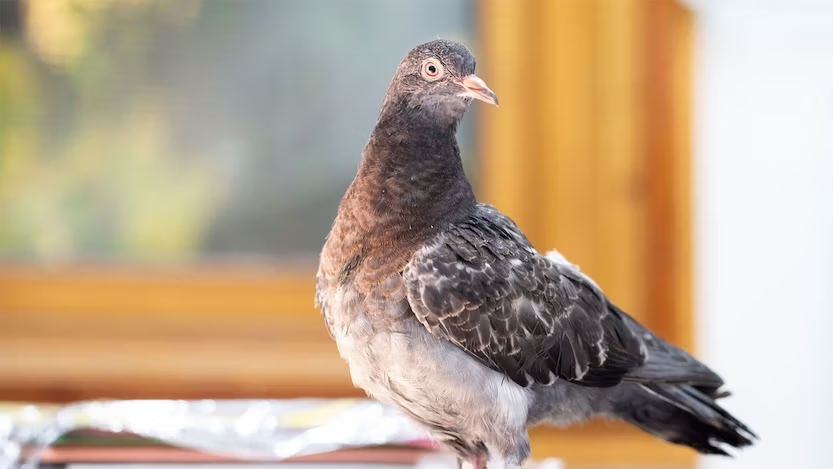
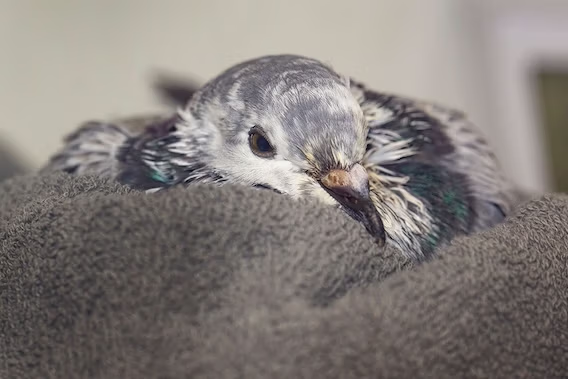
How you can help
You can do the following to help all UK pigeon species:
- Plant seed mixes or allow plants to regenerate naturally to provide a food source throughout spring and summer.
- Avoid cutting back thick hedgerows and allow a layer of shrub to develop around garden edges can help provide safe nesting sites.
- Restore and maintain natural areas of wetland to ensure water availability during dry summer weather.
Frequently Asked Pigeon Questions
My cat has brought in a pigeon, what should I do?
Keep the bird quiet and dark and get it to your local rescue centre, as soon as possible; it will need antibiotics, as infection (from even the tiniest of scratches, barely visible to the human eye) is very quick to spread and will kill within hours, if left untreated.
A bird has flown into my window and seems stunned/there is an injured bird on the ground near a window. Should I just leave it?
The bird is probably concussed. Place it in a dark, ventilated box, and keep it quiet for no longer than 1 hour. Check on its progress and if it seems to be improved, try opening the box in the garden. If the bird is not quite ready to fly, take it to your local wildlife rescue.
I have found a nest of eggs when cutting back my tree
Please, try and put the nest back in a suitable tree, close to the original location, and observe for a couple of hours to see if the parents return. If they do not, sadly, we are not able to help, as it is illegal to take, possess or control any wild birds’ eggs, under the Wildlife and Countryside Act 1981 (as amended). Sadly, the eggs must, therefore, be left to go cold.
I've found a baby pigeon, what should I do?
Pigeon youngsters, known as squabs and squeakers, can often, where possible, be placed back into their nests (using gloved hands) if the nest can be located. If no nest is visible, but the parents are around, a makeshift nest can be fashioned from a tissue box or similar, be hung somewhere high, (out of the reach of cats).
Monitor from a distance to see that the parent birds return. The young are fed pretty constantly throughout daylight hours, so, if a parent bird does not return within a few hours or so, you should probably intervene.
If the bird seems lethargic or has obvious injuries, please follow this advice – Keep the bird warm and quiet and take it into your local wildlife centre, as soon as possible, for feeding. Do not try to feed it yourself, as it is easy to suffocate young birds. Please do not wait for too long before seeking help, as a couple of hours could make the difference to the bird’s survival.
Adopt a Pigeon
By adopting a Pigeon with the Wildlife Aid Foundation, you will be providing vital funds to support the rescue and rehab of injured, sick and orphaned animals. For just £3 per month, your kind adoption will help provide the expert care, treatment and food they require before they are safely returned to the wild – where they belong.
And that’s not all. As a pigeon adopter, not only will you be providing invaluable care and helping countless animals, but you will also receive an exclusive pigeon adoption pack, including cuddly toy, species brochure, certificate of adoption, photo, annual updates and more.
